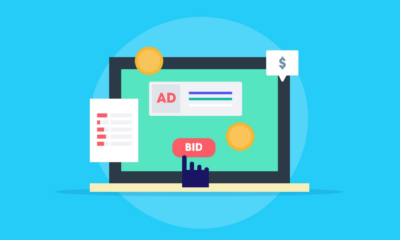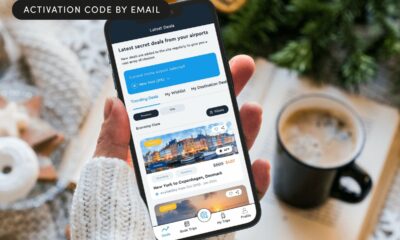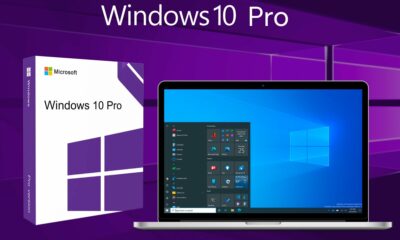SEO
How Chat GPT is changing SEO
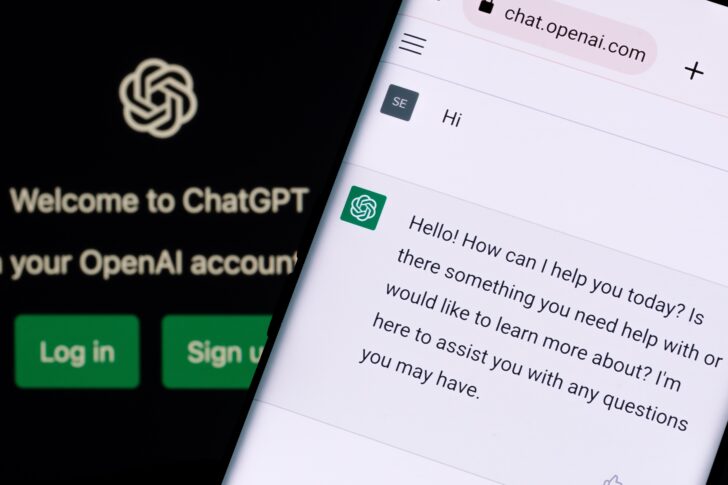
The launch of ChatGPT in November 2022 has been a real game changer for digital marketers across the world. SEO professionals are still trying to navigate the potential benefits and power of this technology.
The ability to type in search queries through live chat and get perfectly and uniquely written content hosts several advantages for those looking to create more content rapidly and scale their online businesses. Webmasters can also create codes faster than they can manually and this can be used to compliment or replace developers.
However, this may also present more challenges with increased competition across the digital marketing landscape and questions on how Google’s search results are going to react with increased marketing intelligence.
We speak to some industry experts and startup marketers to get more insight into how ChatGPT is changing SEO.
Content creation
For consumers, the ability to create unique content and do it almost instantly is probably the biggest advantage of ChatGPT.
“Many SEO professionals may have been dubious at first,” explains Andrew Baker of finance startup, Doddler.
“Writing unique content is something that is drilled into you from day one and anything that is automated or too good to be true can only be negative for SEO.”
“But the early evidence shows that ChatGPT is consistent and the content it produces is unique and can rank well if done correctly,” says Richard Allan of Divorce Bob.
“When it might have typically taken us 6 to 8 weeks to produce 50 pages of quality guides and blog posts, ChatGPT can do this in something like 3 hours.”
“We have been able to add pages for more than 1600 area codes across the US using ChatGPT – and this would have been a mountain to climb without AI or not something we would have considered doing.”
“It still needs a proper SEO person to interpret the right number of keywords, content length and other SEO bits like internal links and headings – but it certainly presents a very scalable way to push out content.
“It presents endless possibilities for targeting area codes, times, amounts and other long tail keywords both domestically and if you were to launch into different countries.”
Staffing and outsourcing
Outsourcing your content and code has been popular for many years, with startups and companies using the likes of Fiverr and outsourcing to India and Philippines for their marketing teams.
“But with ChatGPT, it questions whether you need to hire content staff at all,” argues Matthew Sullivan of consumer finance site, Harpsey.
“For years, there has been a question of whether you even need content writers or developers in-house and why pay local rates when it is cheaper abroad? But today, it is a question of whether you need to hire writers and developers at all.”
“This could mean that thousands of content writers could go out of work overnight. However, in practice, the early signs show that although millions are using ChatGPT, it is a small number to create an economic shock and that traditional businesses are still preferring the manual approach. But who knows if paid writers are using ChatGPT to do their work?”
Rapid prototyping and testing
“With the opportunity to create content so fast, this has given us an exciting way to test and try things out,” explains Gavin Cooper, the founder of Claims Bible. “And this is what a huge part of SEO really is.”
“We have been able to throw content together quickly and test out different site layouts and designs or even compare platforms such as Wix, Webflow or WordPress and determine which ranks the best in the SERPs. From there, we have been able to scale up and build out our business.”
“For us, we have been able to replicate hundreds of pages for different types of claims, whether it is for injuries, banks, car manufacturers and many more – and by having consistent meta-data and good backlinks, we have been able to secure positions on Google and generate quality leads.”
Changes in Google SERPs
If we imagine millions of websites using ChatGPT to put out new content and develop new sites, are we going to see huge fluctuations in rankings across all industries?
This does not appear to be the case yet, with ChatGPT operating now for more than 6 months. But it certainly will not be surprising if some industries which are very tech savvy such as consumer finance, casinos or crypto make huge strides in this area.
Hence, one might expect for some new brands to emerge on page 1 for some very competitive keywords, almost out of thin air, or for there to be some early wins for some sites and some even harder crashes if they get penalized.
Still need experience and SEO knowledge
SEO is always changing and no doubt, ChatGPT has created a paradigm shift and an exciting way to put out fast content and replicate code, allowing new and established businesses to scale up quicker than ever before.
Whilst the Google rule of thumb that ‘content is king’ still applies, one cannot deny it is how SEO professionals use this content that is truly important and will notably change the SEO landscape.
Whilst you can have content written quickly and to a high standard, it is not valuable unless it has smart and experienced SEO to back it up.
It is key to understand the right content to create, the right keyword research, user intent, meta-data and semantics – and if you can pair this with ChatGPT, this could be the recipe for true SEO success.
SEO
How To Choose The Right Bid Strategy For Lead Generation Campaigns

Welcome back to our series on getting started with value-based bidding for lead gen marketers!
We’ve discussed evaluating whether it makes sense for your business, setting your data strategy, and assigning the right values for your conversions.
Now, we’re going to cover the final step before activating your value-based bidding strategy: choosing the right bid strategy for your lead generation campaigns.
The big benefit of value-based bidding is that it allows you to prioritize conversions that are most likely to drive higher revenue or achieve your specific business goals, such as sales, profit margins, or customer lifetime value.
By assigning different values to different conversion actions, you gain greater control over your bidding strategy and optimize for conversions that deliver the most significant impact.
Whether it’s a purchase, a lead, or a specific action on your website, value-based bidding ensures that your bids reflect the true worth of each conversion, enabling you to maximize your return on investment (ROI).
The bidding strategy you select to optimize for value depends on a few factors. Check out this two-minute video for a quick overview, and then keep reading to dive deeper.
Which Value-Based Bidding Strategy Should You Choose?
With value-based bidding, Smart Bidding predicts the value of a potential conversion with each auction.
- If the bid strategy determines that an impression is likely to generate a conversion with high value, it will place a higher bid.
- If this bid strategy determines that the impression isn’t likely to generate a high-value conversion, it’ll place a lower bid.
Value-based bidding can use data from all of your campaigns, including the conversion values you are reporting, to optimize performance.
It also uses real-time signals, such as device, browser, location, and time of day, and can adjust bids based on whether or not someone is on one of your remarketing lists.
To start bidding for value, ensure the following:
- Measure at least two unique conversion values optimized for your business.
- Have at least 15 conversions at the account level in the past 30 days. (Note: Demand Gen should have at least 50 conversions in the past 35 days, with at least 10 in the last seven days or 100 conversions in the past 35 days.)
You’ve got two bidding strategy options to tell Google how you want to optimize for value:
- Maximize conversion value.
- Maximize conversion value with a target ROAS.
Here’s a quick way to think about each before we dig in further:
| Maximize conversion value | Target ROAS | |
| Goal | Maximize conversion values for a specific budget. | Maximize conversion values for a target return on ad spend. |
| When |
|
|
Maximize Conversion Value
This option focuses on maximizing conversion value within a defined budget.
It’s suited for advertisers who prioritize driving the highest possible value within a specific allocated budget.
Advertisers often start with this before moving to a target ROAS strategy.
Maximize Conversion Value At A Target ROAS
This option allows you to set a specific target return on ad spend (ROAS) and instructs Google Ads to optimize your bids to achieve that target while maximizing conversion value.
Target ROAS: Why Your Budget Should Be Uncapped
When bidding with a target ROAS, your campaign budget should not be limited or capped.
That may sound scary at first, but let me reassure you that it doesn’t mean you don’t have control over your campaign spend!
Your ROAS target is the lever that manages your spend.
With a target ROAS, you’re telling Google to optimize for value at that specific target rather than find as much value within a specific budget.
So, when your budget is limited, it potentially prevents the system from having the flexibility to find the next conversion at your target.
Setting Your ROAS Targets
You can choose whether to use a recommended target ROAS or set your own.
When setting ROAS targets, use the last 30 days’ return on ad spend as a benchmark.
Google’s target ROAS recommendations are calculated based on your actual ROAS over the last few weeks.
This recommendation excludes performance from the last few days to account for conversions that may take more than a day to complete following an ad click or interaction (such as an engaged view).
You can find more details on target ROAS here.
Get Started With An Experiment
While you can launch value-based bidding directly, you may want to start with a small test using a campaign experiment. This allows you to compare the performance of value-based bidding against your existing bidding strategy and make data-driven decisions.
You have two options to create a campaign experiment:
One-Click Experiment From Recommendations Page
You may see suggestions on implementing value-based bidding on your Recommendations page.
The recommendation to “Bid more efficiently with Maximize conversion value” will show if our simulations identify that your account is measuring two or more unique conversion values and will likely benefit from this strategy.
From this recommendation, you can create a one-click experiment to test the impact of value-based bidding on a specific campaign.
Custom Experiment
You also have the option to create a more tailored experiment to test value-based bidding in your campaign.
Be sure to choose a campaign that receives sufficient traffic and conversions to generate statistically significant results.
Configure the experiment to use value-based bidding, while the original campaign continues to use your existing bidding strategy.
See the instructions here to set up a custom experiment.
How To Jumpstart Value-Based Bidding
You can employ strategies to jumpstart the system, such as initially setting a low ROAS target or starting with Maximize conversion value without a ROAS target.
If you opt to start with Maximize conversion value without a target, be sure that your budgets are aligned with your daily spend goals.
Allow A Ramp-Up Period Before You Optimize
Once you’ve launched value-based bidding, give the system a ramp-up period of two weeks or three conversion cycles. This allows Google Ads to learn and optimize your bids effectively.
When measuring performance, be sure to exclude this initial period from your analysis to obtain accurate insights.
We’ve now covered all the basics for getting started with value-based bidding.
In our last segment, we’ll discuss monitoring and optimizing your performance to drive value for your business.
More resources:
Featured Image: Sammby/Shutterstock
SEO
An In-Depth Guide For Businesses

Social media marketing is all about being where your audience is.
If your target audience is active on a platform, then you should be, too. And if you’re looking to speak to a younger demographic, Snapchat can be a powerful marketing tool for your business.
Snapchat is the fifth largest social media network in the world – but it’s one of the most misunderstood (and underestimated) by marketers.
So, if you’re concerned about missing the boat on this platform, you’re not alone. You’re also not out of touch – you just need a comprehensive guide to get started. And you’re in the right place.
In this updated guide to Snapchat marketing, we’ll provide you with a deep dive into the multimedia messaging platform, explain who’s using it, and give you the strategies you need to add it effectively to your marketing mix.
Why Use Snapchat For Marketing? (Is It Still Relevant?)
Successful marketers focus on grasping every opportunity to reach potential customers – and Snapchat continues to offer unique opportunities.
As of 2024, Snapchat boasts over 406 million active daily users, with more than 80% of them being 34 or younger. The platform reaches 90% of the 13-24-year-old population worldwide and 75% of 13-34-year-olds in over 25 countries.
This makes it an ideal platform for targeting Millennials, Gen Z, and, increasingly, Gen Alpha.
While it might not have the massive user base of Facebook or YouTube, it drives impressive engagement. According to recent data, the average Snapchat user opens the app over 40 times per day and spends about 30+ minutes daily on the platform – which means people interact with their social circles on Snapchat more than any other social network.
Yet, when it comes to marketing, Snapchat is a relatively untapped territory. While every brand seems to have a Facebook and Instagram presence these days, comparatively few have a foothold on Snapchat. And that just means more opportunity for your brand.
The boon of Snapchat is how it’s optimized for authenticity. Given the ephemeral nature of the app and the more unfiltered style of content approach, brands can use the platform to connect with their audience in ways that feel genuine and immediate – which is more valuable than ever.
And, as if all of this wasn’t enough, Snapchat has established itself as a competitive force in the social commerce market. With its augmented reality (AR) shopping experiences, you’re able to build immersive shopping experiences for users through the app – something most other platforms can’t compete with.
By now, it should be crystal clear why Snapchat could be a strong addition to your marketing strategy. So, how do you get started? Let’s break it down.
How Does Snapchat Work? A Brief Overview
If your social media experience is primarily with platforms like Facebook, Instagram, or X (Twitter), Snapchat’s interface may initially feel like a whole new world.
Snapchat’s design is unique – it’s built for spontaneity, exclusivity, and in-the-moment content creation. When you open the app, it goes directly to the camera, making it super easy for you to capture and share videos and photos (called “Snaps”) in just a few seconds.
You can then edit these Snaps using a variety of filters, stickers, and AR Lenses before sending them directly to your chosen friends or adding to your “Story,” which remains viewable for 24 hours. There’s also a newer Spotlight feature, similar to TikTok, for sharing short-form videos with wider audiences.
The app offers a host of other features, including a Snap Map, an AI-powered chatbot, and disappearing direct messages. Long story short: There are a bunch of innovative and creative ways for brands to engage with audiences on Snapchat.
What Brands Are Best Suited To Snapchat Marketing?
Let me be clear: Snapchat isn’t for every brand. There’s a reason why it’s less frequented than some other social media platforms. That said, if your target audience includes younger consumers, it’s absolutely worth considering.
Brands that are best suited to Snapchat are those that present a youthful image and tone and prioritize authenticity, “realness,” and creativity. If your brand image is highly professional or you have red tape around your marketing efforts, you should likely look elsewhere.
Lifestyle brands, fashion labels, beauty products, entertainment companies, and tech startups – these are the kinds of companies that typically see success on the app.
But really, the opportunity exists for any type of brand that is interested in using Snapchat’s tools to create immersive, engaging content that resonates with the platform’s users.
How To Get the Right “Tone Of Voice” For Snapchat
I mentioned tone above – and on Snapchat, tone of voice is a big deal. The platform itself is playful and casual, so you’re not likely to find success using an overly formal or professional tone.
Instead, your brand should focus on having a genuine conversation with users and infusing your content with humor.
Here are some tips for nailing the Snapchat tone of voice:
- Keep it light: People go to Snapchat to be entertained. Leave your hard sales pitch at the door.
- Prioritize authenticity: It’s a place to show the human side of your brand, whether it’s through user-generated content or behind-the-scenes Snaps.
- Engage, engage, engage: Snapchat has a ton of interactive tools for engaging directly with users, like polls, Q&As, and more. Put them to use!
How To Create A Snapchat Strategy For Business
So, you want to create a successful Snapchat strategy. You can just start posting content sporadically, right? Wrong.
You need to start by understanding your brand’s goals and audience, and then determining the type of content that will best help you reach those people on Snapchat specifically. Here are some steps you can take to start building your Snapchat strategy:
- Decide what you want to achieve on the platform. Maybe it’s brand awareness, community building, or increasing sales – once you know your goals, you can build your content approach around them.
- Know your audience. As with any kind of marketing strategy, this is crucial.
- Experiment and be creative. Try your hand with some of Snapchat’s different tools (like Bitmoji, AR Lenses, filters, etc.) to create content that resonates with your audience. Don’t just choose one type of content and settle – you can (and should) experiment with a variety of Snaps, Stories, and Spotlight videos.
- Be consistent. All great marketers know that consistency is key – and it’s the same story on Snapchat.
- Keep a good balance. Of course, you want to sell your brand to users, but don’t go all in on self-promotional content. Make sure you’re balancing organic, engaging storytelling with talking about yourself.
- Learn (and follow) Snapchat best practices. This is a no-brainer. Spend time on the platform to find what works, and see how you can adopt it in your own strategy.
Types Of Content That Work Best On Snapchat
Snapchat is all about driving engagement. What does that look like in action? Here are some examples of content approaches that work particularly well on the platform.
1. Sneak Peeks & Teasers
Launching a new product or service? Snapchat is a great place to drive excitement by giving your audience teasers or sneak peeks at what’s to come.
You might think about dropping hints about the product, sharing a quick glimpse, or some other behind-the-scenes moments to encourage anticipation among your Snapchat followers.
Warner Bros., for example, has used teaser content to promote its upcoming movie releases.
-
Screenshot from Snapchat.com, August 2024
2. Behind-The-Scenes Content
Speaking of behind-the-scenes, this type of content is tailor-made for Snapchat.
Showing your audience what goes on behind the curtain at your brand is a clever way to create a sense of exclusivity and make people feel like insiders.
3. User-Generated Content (UGC)
You’ve heard about user-generated content – well, Snapchat is a place where UGC really thrives. Consider prompting your followers to create their own Snaps that feature your products or brand, and then share them along with a custom hashtag. Then, you can amplify the strongest ones in your own Stories.
UGC is proven to be a highly effective way to generate social proof, increase brand loyalty, and build a stronger social community.
Javy Coffee is one example of a brand that leveraged UGC by featuring real customer testimonials and stories about how they enjoy the coffee concentrate. This helped the company create relatable ads that resonated with its audience.
-
 Screenshot from Snapchat.com, August 2024
Screenshot from Snapchat.com, August 2024
4. Interactive Content
One thing that separates Snapchat from most other social media platforms is its interactivity. And brands have plenty of opportunities to get in on the action!
Try devising interactive moments for your followers, whether it’s a simple poll, a challenge, or a unique AR Lens. These allow users to really get involved and have a fun experience with your brand – and can lead to new UGC for you, as well.
For example, e.l.f. Cosmetics used AR Lenses combined with Bitmoji to allow users to virtually try on makeup, creating a highly interactive experience for its audience.
-
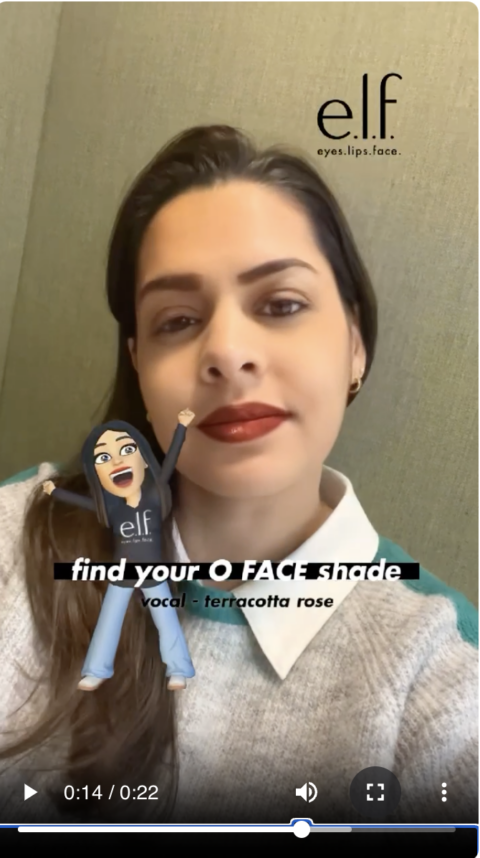 Screenshot from Snapchat.com, August 2024
Screenshot from Snapchat.com, August 2024
5. Exclusive Offers
Want to really impress your Snapchat followers? Reward them. From promo codes to exclusive discounts or early bird access to new products, there is no shortage of ways to treat your audience.
It’s great for them but beneficial for you, too. It gives people a reason to keep engaging with your content and following your brand.
Advertising On Snapchat
While organic content is at the heart of Snapchat, the platform also offers some unique and powerful paid advertising options. The company also rolled out a new ad platform update in August 2024 that provides enhanced analytics, improved targeting, and more.
1. Snapchat Ads
Served to users in between user-generated content, these are full-screen, vertical video ads. They’re not dissimilar to Instagram Stories, and can include interactive elements such as having a user swipe up to visit a website.
The Salvation Army’s Snapchat Ads featured videos depicting real-life stories of individuals impacted by its services, emphasizing themes of hope and transformation. These ads connected emotionally with viewers and included a swipe-up option to learn more or donate, making the content both impactful and actionable.
-
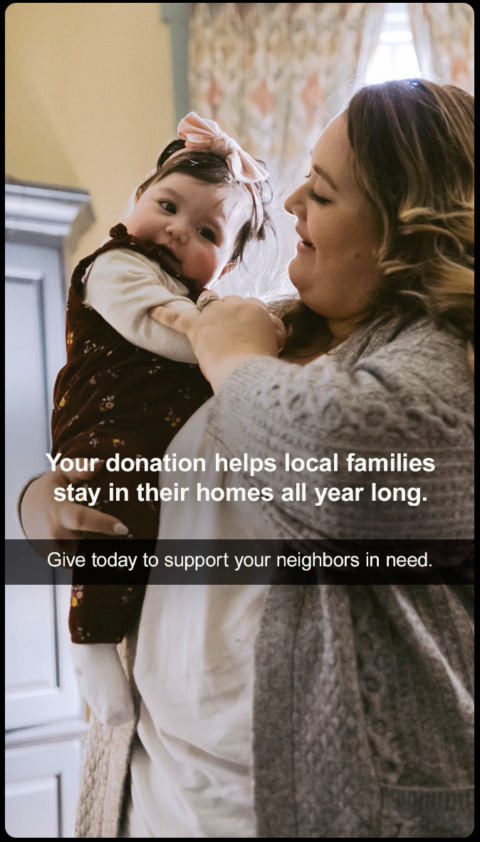 Screenshot from Snapchat.com, August 2024
Screenshot from Snapchat.com, August 2024
2. Sponsored AR Lenses
One of Snapchat’s unique offerings is its custom AR Lenses, which brands can create for users to experience.
You can create Lenses that allow users to virtually “try on” products, for example, put people in a humorous visual setting or even have them play games. At times, they can even respond to users’ movements or the environment around them.
These can be hyper-engaging and drive a lot of interactions – like Volkswagen did when it used an AR Lens to enable people to experience its ID.3 electric vehicle virtually. Using the Lens, people could place a virtual model of the car in their environment, explore its features, and even change the color.
-
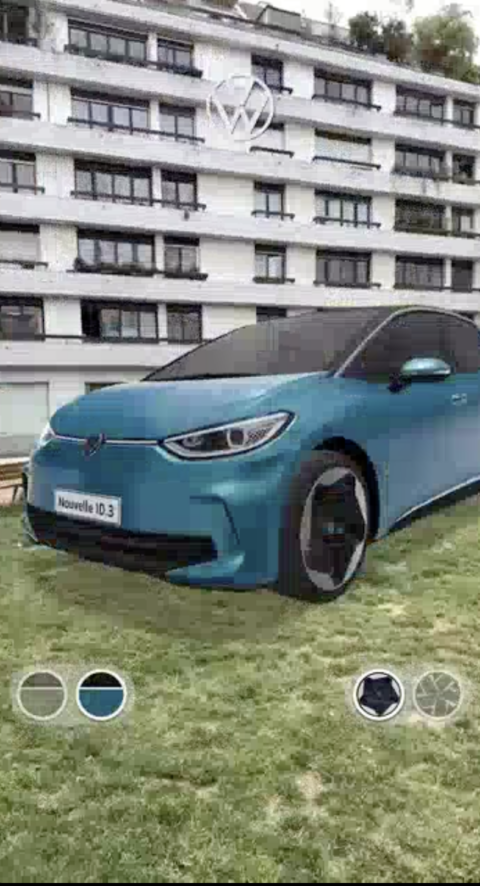 Screenshot from Snapchat.com, August 2024
Screenshot from Snapchat.com, August 2024
3. Filters
These are static overlays that you can apply to your Snaps once they’re created – and brands are able to design their own to delight Snapchat users. These are typically non-interactive but are fun visual enhancements that enable people to add some creative flair to their content.
Post Consumer Brands created its own custom Snapchat Filter to promote its Honeycomb cereal – and it was very sweet!
-
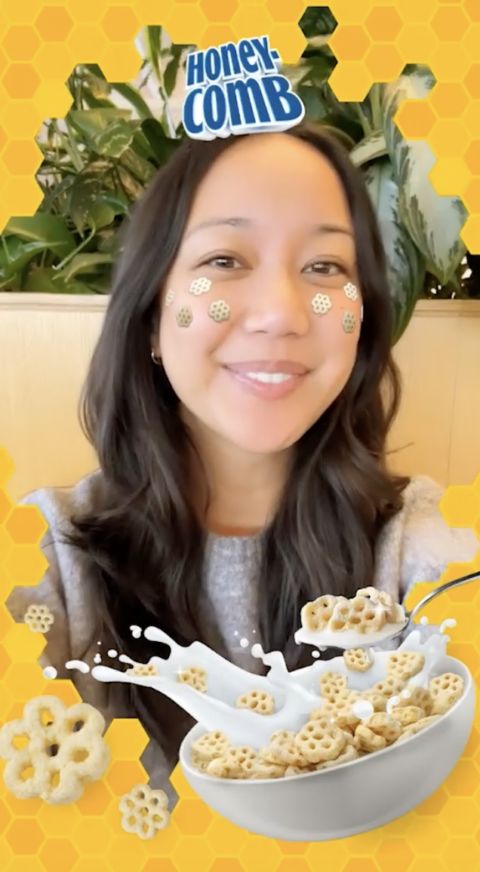 Screenshot from Snapchat.com, August 2024
Screenshot from Snapchat.com, August 2024
4. Dynamic Ads
Snapchat’s Dynamic Ads enable brands to automatically create and deliver personalized ads to users based on their behavior and interactions with your company. For example, if a user visits your website and looks at a specific hat, Snapchat might serve them an ad for that product.
If you work for an ecommerce company, these might be particularly interesting to you, as you can automate ad creation based on your product catalog – so you don’t need to lift a finger.
Fashion brand Free People has used Dynamic Ads to automate personalized ads for users, ensuring that those who viewed specific items on its website were later served ads featuring those exact products on Snapchat. It resulted in a 396% increase in demand.
-
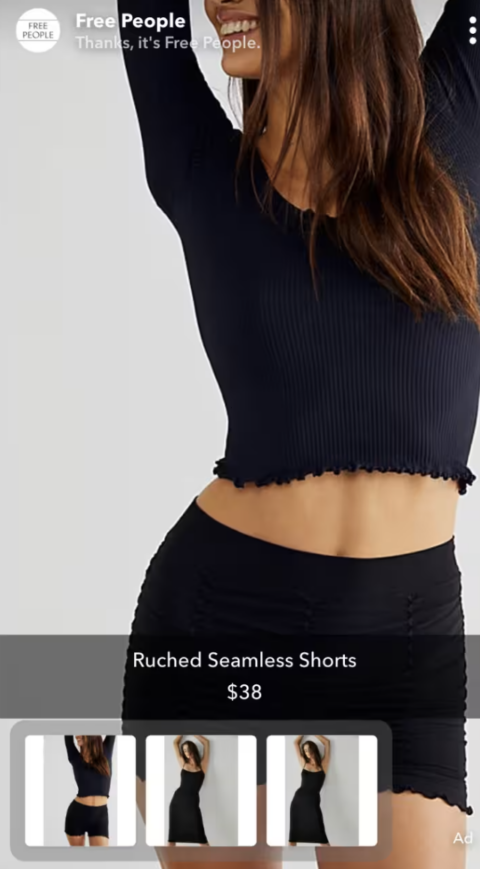 Screenshot from Snapchat.com, August 2024
Screenshot from Snapchat.com, August 2024
5. Commercials
These are non-skippable Snapchat video ads that usually appear within the platform’s premium content, like Snap Originals.
They’re short – three to six seconds for a Standard Commercial and up to 180 seconds for an Extended Play Commercial (though users can skip after the first 6 seconds) – and are optimized for high visibility.
They typically focus more on storytelling than some of the other ads on the network.
Let’s Get Snapping!
Yes, Snapchat is still an effective marketing platform for reaching younger audiences – but you must be mindful about your strategy and approach.
With its unique blend of high engagement, unique creative tools, and loyal audience, Snapchat offers brands a variety of ways to connect with their target consumers.
Hopefully, this guide has given you the insights and inspiration you need to build a successful Snapchat marketing strategy in 2024.
Now, it’s time to put these ideas into action and start Snapping your way to success.
More resources:
Featured Image: Andrey_Popov/Shutterstock
SEO
How to Leverage AI Video Enhancements

Earlier this year, Google introduced new AI features into its Google Ads platform to help streamline work for many advertisers.
One of those new features comes in the form of AI video enhancements.
This is no surprise since video makes up over 65% of all internet traffic.
Read on to learn more about the AI video enhancements tutorial and how they can help streamline your PPC campaign optimization.
How do AI Video Enhancements Work?
In Google Ads, the AI video enhancement tool uses smart automation features to enhance your videos in a variety of ways.
It’s important to note that video enhancements are turned on by default but can easily be turned off at any time.
The feature can be found within your Google Ads campaign settings.
If you’re creating a new Google Ads campaign, this setting will only be available if you choose “Sales” as the goal and “Video” as the campaign type.
From there, go down to “Additional settings” to find the AI video enhancements settings:
Types of Enhancements Available
Google’s new AI video enhancements provide marketers with two areas to optimize current video assets.
#1: Additional video sizes and ratios
The first enhancement type can take existing horizontal videos and create additional versions for vertical and square ratios for optimal viewing.
The new ratio sizes that Google can create include:
This feature can help the new video sizes feel more native to users viewing on mobile devices and create a better user experience.
#2: Get shorter versions of video ads
Say you’ve got a stellar video asset, but it may be too long to keep a user’s attention.
This new video enhancement uses Google AI to select key moments in the existing video to create shorter versions while keeping the original video message and appearance.
Per Google, these shorter video versions will automatically start running if they pass a quality review.
What are the benefits of using AI Video Enhancements?
As we come into Q4, time is of the essence for every marketer.
Resources are trying to do more with less, all while producing optimal PPC campaign results.
If you or your team are strapped for time or have a heavy workload, testing the Google AI video enhancements could be a key helper for your creative assets.
Some key benefits of testing out video enhancements include:
- Reducing workload and budget
- Takes the heavy lifting out of manually optimizing creatives
- Can help boost campaign effectiveness
- May help improve conversions
In Summary
With the ability to automatically generate different video sizes and ratios and create shorter versions of longer video ads, these tools are designed to save time and reduce the manual effort of video editing.
As marketers head into Q4 and face increasing demands, utilizing Google’s AI video enhancements can help lighten workloads, improve campaign effectiveness, and potentially increase conversions while keeping within budget constraints.
Featured image: monticello/Shutterstock
-

 SEO7 days ago
SEO7 days ago9 HTML Tags (& 11 Attributes) You Must Know for SEO
-
SEARCHENGINES5 days ago
Daily Search Forum Recap: September 17, 2024
-
SEARCHENGINES6 days ago
Daily Search Forum Recap: September 16, 2024
-
![Holistic Marketing Strategies That Drive Revenue [SaaS Case Study] Holistic Marketing Strategies That Drive Revenue [SaaS Case Study]](https://articles.entireweb.com/wp-content/uploads/2024/09/Holistic-Marketing-Strategies-That-Drive-Revenue-SaaS-Case-Study-400x240.png)
![Holistic Marketing Strategies That Drive Revenue [SaaS Case Study] Holistic Marketing Strategies That Drive Revenue [SaaS Case Study]](https://articles.entireweb.com/wp-content/uploads/2024/09/Holistic-Marketing-Strategies-That-Drive-Revenue-SaaS-Case-Study-80x80.png) SEO5 days ago
SEO5 days agoHolistic Marketing Strategies That Drive Revenue [SaaS Case Study]
-

 WORDPRESS5 days ago
WORDPRESS5 days agoFree Websites for Students – WordPress.com News
-

 WORDPRESS6 days ago
WORDPRESS6 days agoOur Partner Directory Has Arrived – WordPress.com News
-
SEARCHENGINES4 days ago
Daily Search Forum Recap: September 18, 2024
-

 SEO6 days ago
SEO6 days agoLeverage Search Intent & Boost Your Visibility With These Expert SEO Strategies


